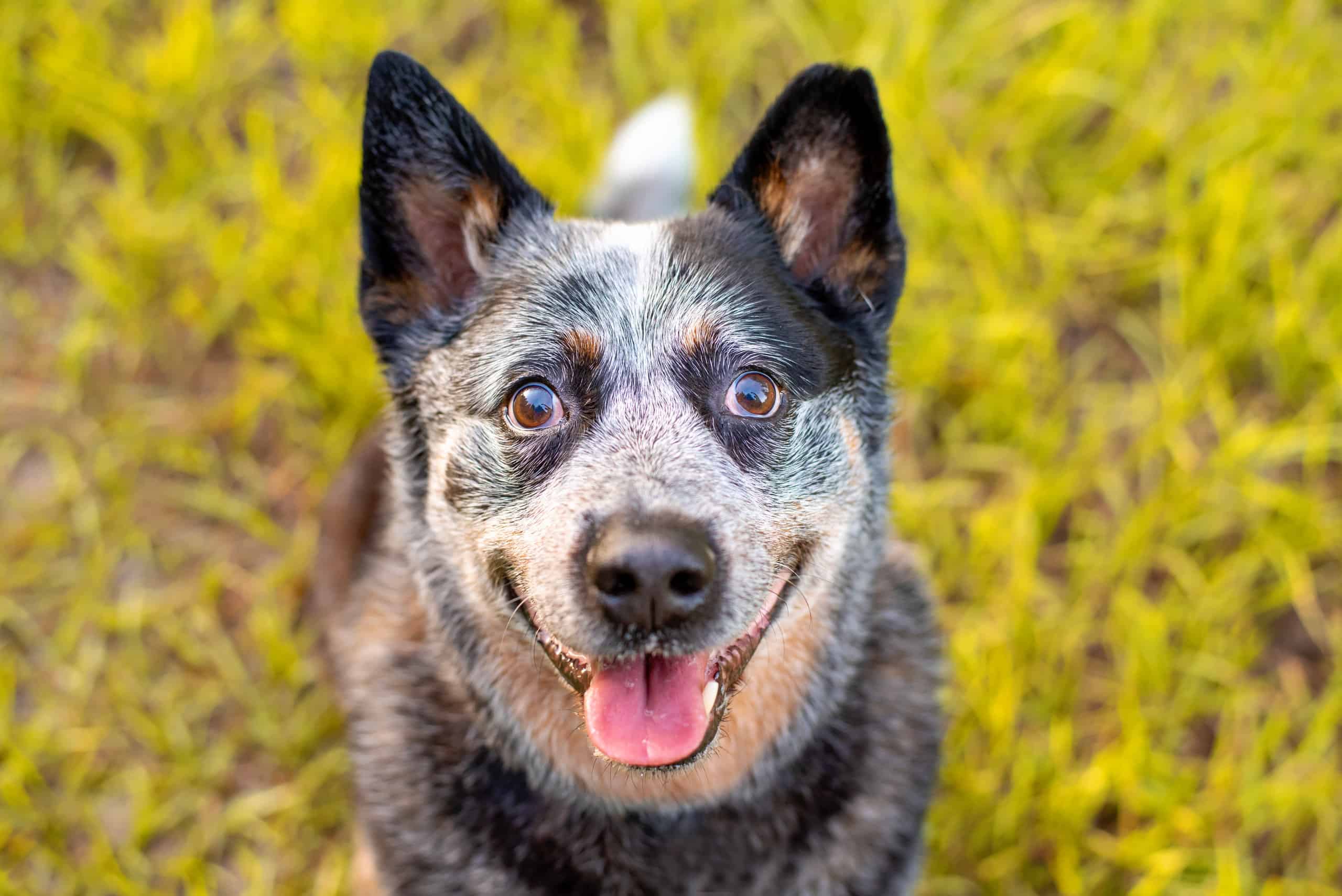A captivating and critically acclaimed Australian children’s animated TV series, Bluey has captured the hearts of audiences worldwide. This global phenomenon transcends borders, showcasing the spirited adventures of Bluey, a six-year-old puppy who navigates the joys and challenges of life with boundless imagination and heartwarming humor. The show’s delightful storytelling and depiction of family life resonates with both children and adults, making it an unforgettable experience. But what kind of dog is Bluey?
Who is Bluey?
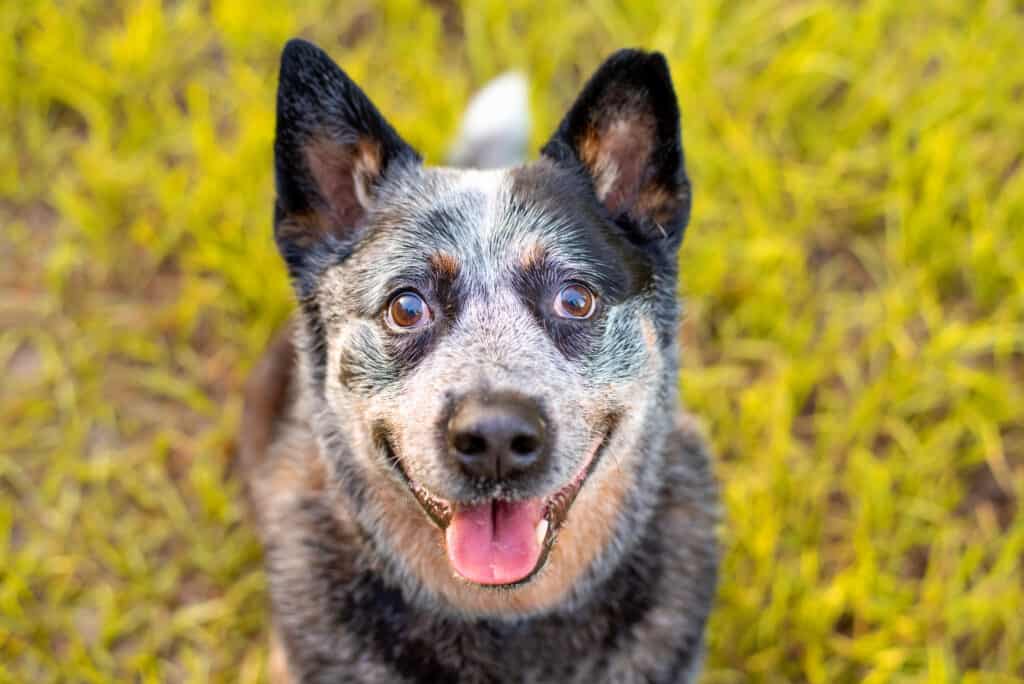
Bluey is a beloved Australian pup who has become an international superstar.
©iStock.com/Tatyana Consaul
The star of the show, Bluey is a perpetually energetic six-year-old puppy who loves to play and is always ready for her next thrilling escapade. She loves inventing elaborate imaginary games, going on adventures, and goofing around with her family. She spends much of her time with her little sister, Bingo, and her parents, Bandit and Chilli. Bluey’s infectious enthusiasm draws others into her incredible world of make-believe, where she effortlessly transforms ordinary objects into all kinds of extraordinary things. A natural-born explorer, Bluey is constantly asking endless questions and fearlessly experimenting with new ideas.
True to her name, Bluey is a cute little blue pup. She has prominent dark blue spots, complemented by her light blue paws and stomach and golden yellow snout. Her father, Bandit, looks very similar in appearance, but with black spots and lighter ticking. Her sister and mother, however, sport reddish-brown patterns.
What Kind of Dog is Bluey?
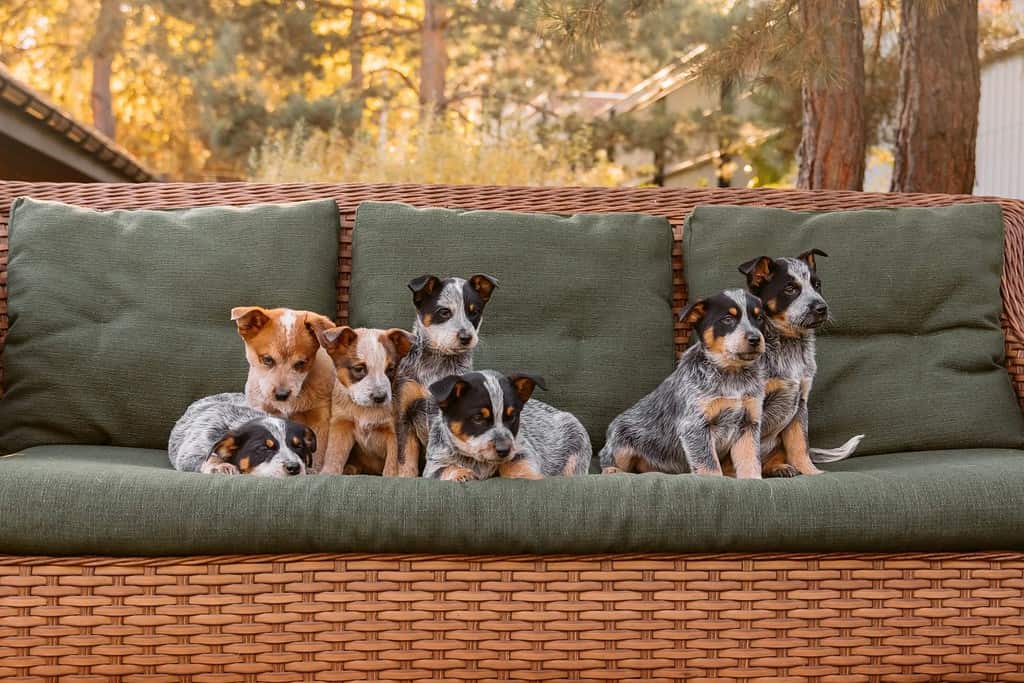
Australian cattle dogs are also called red heelers, blue heelers, and Queensland heelers.
©OlgaOvcharenko/Shutterstock.com
Bluey is a blue heeler or Australian cattle dog. This is quite fitting, since her full name is actually Bluey Heeler! In fact, the entire Heeler family in Bluey is made up of Australian cattle dogs — also known as heelers. Bluey and her dad, Bandit, are blue heelers, while her sister, Bingo, and their mother, Chilli, are red heelers. Bluey’s cousin, Muffin, and her Aunt Trixie, are both white heelers. Bluey even has an uncle who is a rather unique-looking red and blue heeler mix!
Appearance
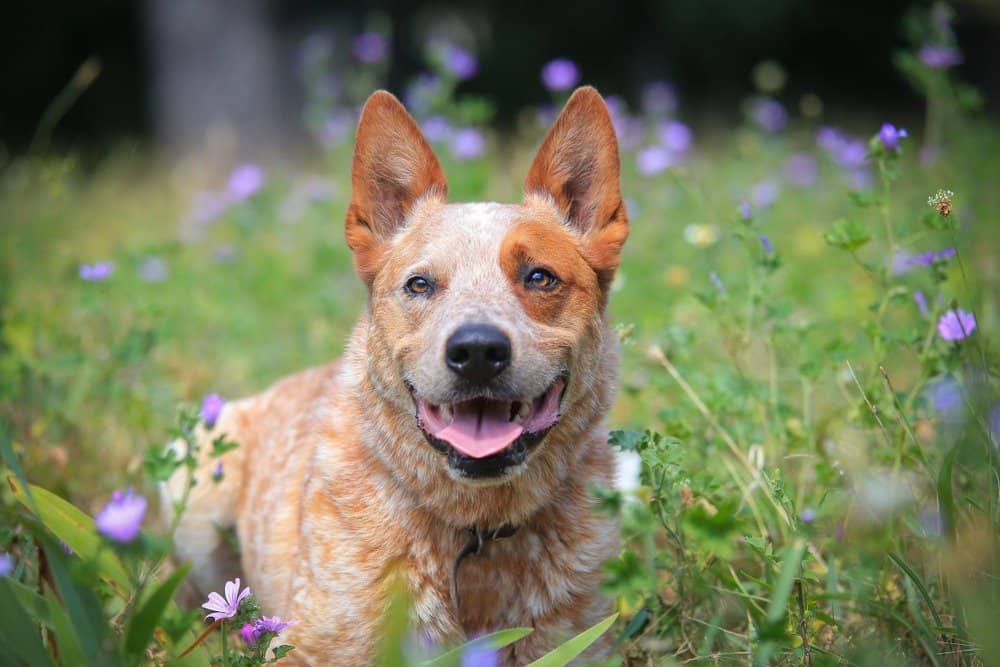
Red heelers have a reddish or tawny base coat.
©Melounix/Shutterstock.com
Officially known as Australian cattle dogs, many people call these dogs blue heelers and red heelers. The nickname “heeler” comes from the breeds’ tendency to nip at the heels of cattle to help move them along, while “red” and “blue” comes from the color of their coats.
Like Bluey and the rest of the Heeler family, Australian cattle dogs or heelers are strong dogs with sturdy, muscular bodies. They have wide heads and deep muzzles, with pointed ears that are always on alert. Females typically grow 17 to 19 inches tall at the shoulders, while males grow slightly larger, around 18 to 20 inches tall. Heelers weigh 35 to 50 pounds and live for 12 to 16 years.
Red Heeler vs. Blue Heeler

Heeler puppies are much lighter in color than their adult counterparts.
©Julia_Siomuha/iStock via Getty Images
The traditional standard for Australian Cattle dogs or heelers includes just two colors: red and blue. Blue dogs may be solid, mottled, or speckled. Although they are called “blue heelers”, these dogs actually have a black colored base. They also have white hairs that mix in with their black ones, however, which creates an overall appearance of blue. If they didn’t have any of these white hairs, blue heelers would just be solid black! Many blue heelers also have additional black or tan markings.
Red heelers, on the other hand (like Bluey’s mother and sister), have a red or reddish-brown base. The intermingling white hairs, however, create a red-speckled appearance.
All heelers — no matter their color — come into the world as cute little white puppies! Some puppies are white from head to toe, while others have colored markings on their heads and tails. Within a few weeks, however, heeler puppies begin to develop their red or blue ticking or roaning patterns. As adults, there is usually just a white marking on their forehead that remains.
However, some heelers have various white marks throughout their coat, particularly on their tails. In some dogs, the white patterns form into rings that make them look like raccoon tails! In addition, heelers often have a dark patch or “mask” over one or both eyes as well.
Other Heeler Colors

On rare occasions, a heeler’s base coat stays white or cream.
©adogslifephoto/iStock via Getty Images
Although they are not recognized as “standard” colors, on occasion you might see other heeler colors. Chocolate heelers, for example, have a brown base coat with light brown markings. Cream or white heelers have a light, cream-colored base coat (like Bluey’s aunt and cousin). Some are completely white, while others have more white hairs than colored ones, making them appear much lighter in color. Some may also have darker markings on top of the cream basecoat.
Australian Cattle Dog Behavior: The Birth of the “Heeler”
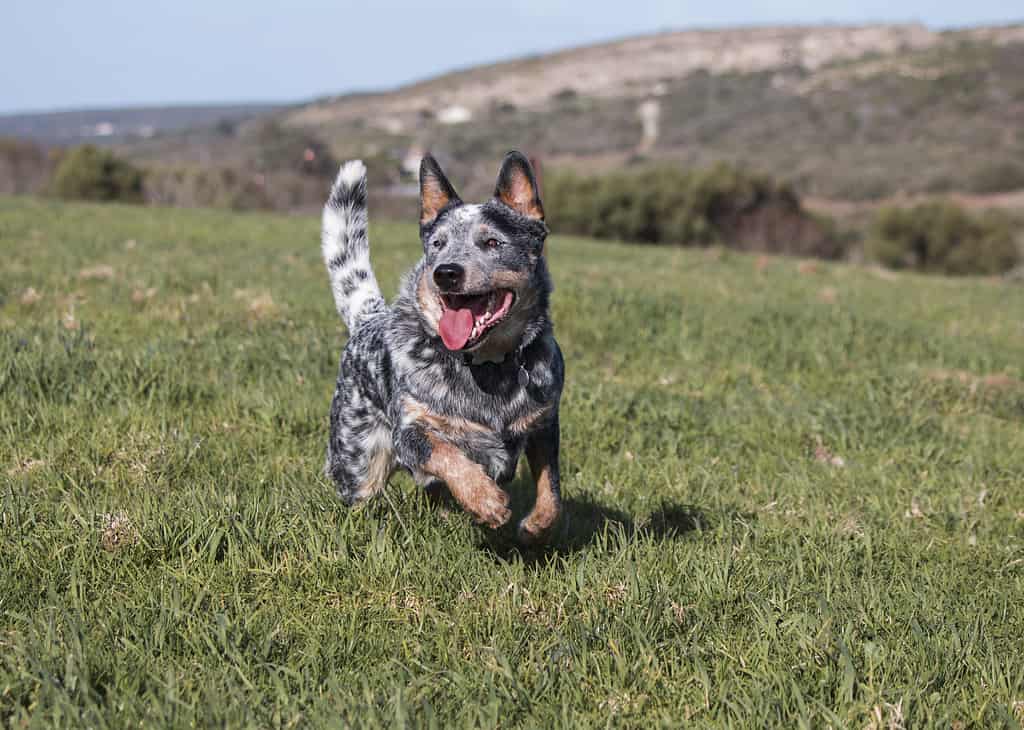
Heelers love to run and seem to never tire!
©Madelein_Wolf/iStock via Getty Images
Aptly named, Australian cattle dogs were originally bred for driving cattle in Australia. During the 1800s, British colonists struggled trying to move their cattle across the rugged terrain. Although they had herding dogs to assist them, they were loud and disrupted the cows by snapping at them.
Thomas Simpson Hall decided to breed his own dogs — blue-speckled Highland collies — with some of the native dingos. The new dogs worked silently, unlike the previous herding dogs, and nipped at the heels of the cattle when necessary. Due to this behavior, his new dog breed became known as “Halls Heelers”.
A few decades later, Jack and Harry Bagust bred Halls Heelers with Kelpies and Dalmatians. In addition, Alan McNiven crossbred them with Dingos, German shepherds, Kelpies, and kangaroo hounds. After World War II, American soldiers brought many of these new crossbred dogs home, introducing the new “Australian cattle dog” to the United States.
Today, these dogs are not only resilient and hard-working, but like Bluey, they also possess abundant intelligence and creativity. In fact, it is quite common for Australian cattle dogs to outsmart their human companions! However, the downside of their incredibly high intelligence is that a lack of mental engagement can quickly lead to boredom and mischievous behavior. Australian cattle dogs or heelers need ample physical and mental stimulation for their overall well-being. Fortunately, due to their endless reserves of energy, cattle dogs make excellent running companions.
Ready to discover the top 10 cutest dog breeds in the entire world?
How about the fastest dogs, the largest dogs and those that are -- quite frankly -- just the kindest dogs on the planet? Each day, AZ Animals sends out lists just like this to our thousands of email subscribers. And the best part? It's FREE. Join today by entering your email below.
Thank you for reading! Have some feedback for us? Contact the AZ Animals editorial team.

